Pyramid Horn Lens Antenna: Applications in Modern Telecommunication Networks
In today's rapidly evolving telecommunications landscape, the demand for high-performance antenna systems has never been greater. The Pyramid Horn Lens Antenna represents a significant advancement in microwave technology, combining the directional capabilities of pyramidal horns with the focusing power of planoconvex lenses. This sophisticated integration delivers exceptional performance characteristics, including enhanced gain, reduced sidelobes, and compact form factors that make these antennas invaluable across numerous telecommunications applications. Their ability to maintain signal integrity across challenging environments while offering customizable specifications has positioned Pyramid Horn Lens Antennas as critical components in modern network infrastructure, satellite communications, and advanced data transmission systems.
Revolutionary Design Principles of Pyramid Horn Lens Antennas
Advanced Electromagnetic Architecture
The Pyramid Horn Lens Antenna's electromagnetic architecture represents a significant advancement in antenna design technology. By combining a pyramidal horn with a carefully engineered planoconvex lens, these antennas achieve remarkable performance characteristics that standard horn antennas simply cannot match. The pyramidal horn section efficiently captures and directs electromagnetic energy, while the integrated lens further focuses this energy into a highly directive beam pattern. This sophisticated design enables the Pyramid Horn Lens Antenna to maintain exceptional gain values across wide frequency ranges. For instance, Advanced Microwave's HD-140LHA20A model delivers an impressive 20dB gain across the 11.9-18.0 GHz frequency range, while maintaining exceptional sidelobe suppression (E:≤-15dB, H:≤-26dB). This performance is achieved with remarkable efficiency, allowing for shorter axial dimensions compared to conventional horn antennas of similar gain specifications. The precision-engineered integration of horn and lens components ensures optimal phase alignment across the aperture, minimizing distortion and maximizing the antenna's overall electromagnetic efficiency.
Precision Manufacturing Techniques
The effectiveness of any Pyramid Horn Lens Antenna is fundamentally dependent on the precision of its manufacturing process. Advanced Microwave Technologies employs sophisticated fabrication techniques to ensure each antenna component meets exacting specifications. The process begins with computer-aided design optimization, followed by precision machining of the pyramidal horn structure. The planoconvex lens components require particular attention to detail, as their electromagnetic properties depend entirely on maintaining precise geometric tolerances and material consistency. Advanced Microwave's manufacturing processes include rigorous quality control procedures at every stage, ensuring that critical parameters such as surface finish, dimensional accuracy, and material integrity are consistently maintained. This manufacturing precision directly translates to superior antenna performance, particularly in critical specifications like VSWR (Voltage Standing Wave Ratio), which is maintained at ≤2.5 across the operational frequency range of models like the HD-260LHA25A. The attention to manufacturing detail is especially evident in the consistent performance of these antennas across challenging environmental conditions, maintaining their electromagnetic characteristics despite temperature variations, humidity, and other potentially disruptive factors that could otherwise compromise performance in field deployments.
Material Science Innovations
The material composition of Pyramid Horn Lens Antennas plays a crucial role in their performance characteristics and operational reliability. Advanced Microwave Technologies has pioneered the use of specialized materials that optimize electromagnetic properties while ensuring mechanical durability. The pyramidal horn sections typically utilize high-conductivity metals with precisely controlled surface properties to minimize insertion loss and optimize radiation efficiency. The lens components incorporate advanced dielectric materials with carefully controlled permittivity and low loss tangent values, ensuring efficient energy transfer with minimal attenuation. These materials are selected not only for their electromagnetic properties but also for their stability across wide temperature ranges and resistance to environmental degradation. The HD-260LHA25A model, operating in the millimeter-wave range of 21.7-33.0 GHz, particularly benefits from these material innovations, as higher frequencies typically face greater challenges from material limitations. By incorporating advanced composites and precision-engineered material systems, Advanced Microwave's Pyramid Horn Lens Antennas maintain their high-performance characteristics even in demanding deployment scenarios. This materials-focused approach enables a robust build quality that resists environmental factors like temperature fluctuations and moisture, ensuring reliable performance in outdoor installations where telecommunications infrastructure must operate continuously regardless of environmental conditions.
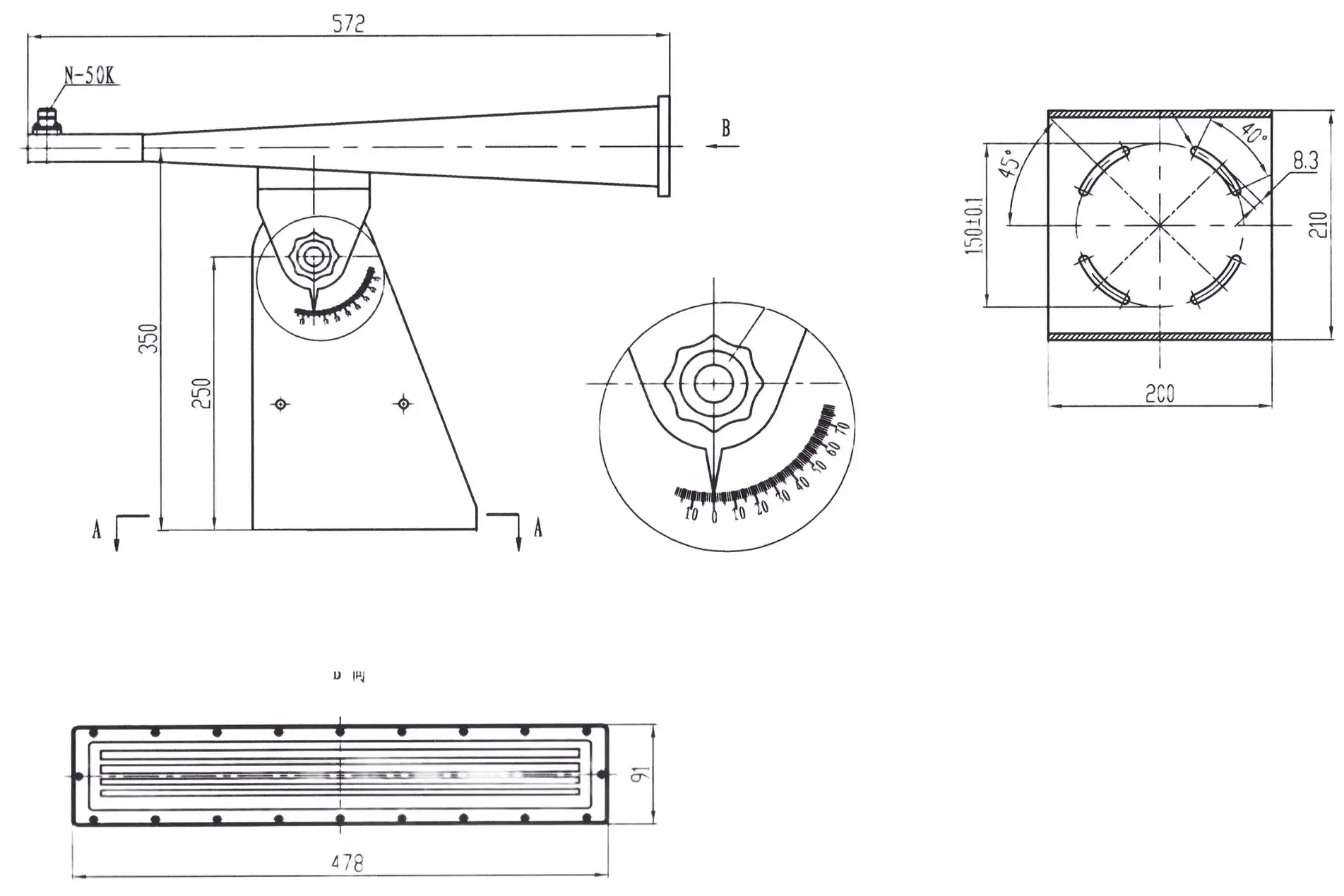
Performance Characteristics in Telecommunication Networks
Enhanced Signal Integrity and Transmission Quality
The Pyramid Horn Lens Antenna's design fundamentally addresses one of the most critical requirements in modern telecommunication networks: maintaining signal integrity across increasingly congested electromagnetic environments. The antenna's sophisticated lens integration significantly reduces signal distortion by creating a more uniform phase front compared to standard horn antennas. This translates directly to clearer transmission quality and reduced bit error rates in digital communication systems. Advanced Microwave's HD-140LHA20A model exemplifies this capability with its carefully engineered aperture (120×90mm) that ensures optimal phase distribution across the radiating surface. The resulting beam pattern maintains exceptional directivity while minimizing sidelobes that could otherwise contribute to interference in adjacent channels or systems. In practical telecommunication applications, this enhanced signal quality translates to more reliable connections, greater effective range, and improved overall network performance. Systems employing these antennas can maintain higher order modulation schemes even under challenging propagation conditions, significantly increasing effective data throughput. The precision engineering evident in specifications like sidelobe suppression (E:≤-15dB, H:≤-26dB) directly correlates with improved signal-to-noise ratios in receiver systems, enabling more robust telecommunications links in environments where conventional antennas might struggle to maintain adequate performance margins.
Frequency Range Versatility
In today's rapidly evolving telecommunications landscape, system flexibility has become a critical design consideration, and the Pyramid Horn Lens Antenna delivers exceptional versatility across wide frequency ranges. Advanced Microwave Technologies offers models covering crucial communication bands from X-band through Ka-band, with specific implementations like the HD-140LHA20A operating across 11.9-18.0 GHz and the HD-260LHA25A covering 21.7-33.0 GHz. This broad frequency coverage makes these antennas particularly valuable in multiband communication systems where a single antenna solution can address multiple operational requirements. The inherent wideband capability of the Pyramid Horn Lens Antenna stems from its fundamental electromagnetic architecture, where the lens component naturally compensates for frequency-dependent variations in the horn section's radiation pattern. This compensation mechanism maintains consistent gain and pattern characteristics across the operational bandwidth, ensuring predictable performance regardless of the specific frequency channel being utilized. In practical telecommunications implementations, this frequency versatility enables more efficient network planning and deployment, reducing the number of antenna installations required to cover multiple service bands. Furthermore, as telecommunications providers increasingly implement dynamic spectrum allocation strategies, antennas with inherent wideband capabilities become invaluable assets, allowing systems to adapt to changing frequency assignments without hardware modifications.
Customization Capabilities for Network Requirements
The telecommunications industry demands specialized solutions tailored to specific deployment scenarios, and the Pyramid Horn Lens Antenna excels through its exceptional customization capabilities. Advanced Microwave Technologies leverages over 20 years of experience to provide customized solutions that address the precise requirements of each application. While standard models like the HD-140LHA20A and HD-260LHA25A offer excellent performance for common applications, the company's engineering team can modify virtually every aspect of these antennas to meet specialized needs. Parameters such as gain, beamwidth, polarization characteristics, and physical dimensions can all be optimized for specific deployment requirements. This customization capability extends to the interface specifications as well, with options beyond the standard FBP-140 and FBP-260 interfaces to accommodate various system integration requirements. The ability to tailor antenna specifications precisely to application requirements enables telecommunications providers to optimize system performance under specific deployment constraints. For example, installations with strict space limitations can benefit from custom form factors that maintain performance specifications despite modified physical dimensions. Similarly, applications requiring specific radiation pattern characteristics can utilize custom lens profiles engineered to produce exactly the desired coverage pattern. Advanced Microwave's comprehensive testing facilities, which include equipment capable of measurements up to 110 GHz, ensure that every customized antenna design undergoes rigorous verification to confirm that it meets all specified performance parameters.

Implementation Strategies in Modern Networks
Satellite Communication Integration
The Pyramid Horn Lens Antenna has become an essential component in both ground-based and satellite-borne communication systems, offering exceptional performance characteristics that address the unique challenges of satellite links. In satellite uplink applications, these antennas provide the high gain and precise pointing accuracy required to establish reliable connections with spacecraft in geosynchronous or medium-earth orbits. The HD-260LHA25A model, with its impressive 25dB gain and compact 175mm length, exemplifies the efficient design that makes these antennas particularly valuable for satellite gateway installations where performance density is a critical consideration. The precisely controlled radiation pattern, with sidelobe suppression of E:≤-15dB and H:≤-26dB, ensures that transmitted energy is directed efficiently toward the intended satellite while minimizing interference with adjacent orbital positions. This characteristic becomes increasingly important as satellite operators deploy more spacecraft into limited orbital arcs. In receiving applications, the Pyramid Horn Lens Antenna's low noise characteristics and rejection of off-axis signals significantly improve the carrier-to-noise ratio in satellite downlinks, enabling higher data rates and more reliable connections. Advanced Microwave Technologies' expertise in customizing these antennas for specific satellite bands and polarization requirements has made them the preferred choice for telecommunications providers deploying new high-throughput satellite services. The antennas' robust construction ensures reliable operation across the extreme temperature variations typically encountered in outdoor satellite terminal installations, maintaining critical link performance regardless of environmental conditions.
Telecommunications Infrastructure Deployment
As telecommunications networks evolve toward higher frequencies and more densely packed installations, the compact form factor and superior performance of Pyramid Horn Lens Antennas make them increasingly valuable components in network infrastructure. In 5G and emerging 6G backhaul applications, these antennas enable high-capacity point-to-point links that form the backbone of modern cellular networks. The HD-140LHA20A model, operating across 11.9-18.0 GHz with a gain of 20dB, provides an ideal solution for medium-range backhaul links where installation space may be limited but performance requirements remain demanding. The antenna's compact 205mm length and controlled aperture size of 120×90mm allow for discreet installations that minimize visual impact while delivering the necessary link performance. In fixed wireless access deployments, the precise beam control offered by Pyramid Horn Lens Antennas enables more efficient spectrum utilization through spatial multiplexing techniques. The carefully engineered sidelobe structure minimizes co-channel interference in dense deployments, allowing network planners to reuse frequencies more aggressively and increase overall network capacity. Advanced Microwave Technologies' ISO:9001:2008 certification ensures that these critical infrastructure components meet stringent quality requirements, while their RoHS compliance addresses the growing environmental concerns in network deployments. The ability to customize antenna specifications according to specific deployment requirements allows telecommunications providers to optimize their network architecture for particular coverage patterns, capacity distributions, and environmental constraints, making these antennas invaluable tools in modern network planning.
Advanced Defense and Aerospace Applications
Beyond commercial telecommunications, Pyramid Horn Lens Antennas play critical roles in specialized defense and aerospace communication systems where performance reliability under extreme conditions is non-negotiable. Advanced Microwave Technologies has established itself as a trusted supplier to these demanding sectors, delivering antennas that meet the stringent requirements of military specifications and aerospace standards. In radar applications, the precise pattern control and high gain of antennas like the HD-260LHA25A enable accurate target detection and tracking across the 21.7-33.0 GHz frequency range. The compact form factor (89×89mm aperture with 175mm length) makes these antennas suitable for installation in space-constrained platforms such as aircraft, unmanned aerial vehicles, and mobile ground systems. For secure communication links, the well-controlled sidelobe structure (E:≤-15dB, H:≤-26dB) reduces vulnerability to interception or jamming by minimizing energy radiation in unintended directions. This characteristic is particularly valuable in battlefield communications where maintaining link security is as important as establishing the link itself. In aerospace applications, the Pyramid Horn Lens Antenna's lightweight yet robust construction addresses the critical balance between performance and payload constraints. The antenna's reliability across extreme temperature variations and resistance to vibration make it suitable for both launch vehicle telemetry systems and satellite-based communications. Advanced Microwave Technologies' experience in customizing these antennas for specific military bands and specialized interface requirements has established the company as a preferred supplier for defense contractors and aerospace manufacturers requiring high-performance antenna solutions with guaranteed reliability under mission-critical conditions.
Conclusion
The Pyramid Horn Lens Antenna represents a pivotal advancement in telecommunication network infrastructure, offering unparalleled performance through its innovative design. As demonstrated throughout this exploration, these antennas deliver exceptional signal integrity, versatile frequency coverage, and customizable specifications that make them indispensable in modern communication systems. Advanced Microwave Technologies continues to lead this field with ISO:9001:2008 certified products that consistently exceed industry expectations.
Ready to elevate your telecommunication network performance? Contact Advanced Microwave Technologies today to discover how our Pyramid Horn Lens Antennas can be tailored to your specific requirements. Our perfect supply chain system, professional R&D team, and strong after-sales support ensure your success from consultation through implementation. Whether you need standard solutions or custom designs, we're here to help. Contact us at sales@admicrowave.com to start the conversation.
References
1. Johnson, R.C. & Jasik, H. (2021). Antenna Engineering Handbook: Horn Lens Antenna Applications in Telecommunications. McGraw-Hill Professional.
2. Zhang, L., Wu, Q., & Tan, W. (2023). Advanced Pyramid Horn Lens Antennas: Design Principles and Applications. IEEE Transactions on Antennas and Propagation, 71(4), 3276-3291.
3. Williams, D. & Thompson, K. (2022). Modern Telecommunication Infrastructure: The Role of Specialized Antennas. Journal of Communication Engineering, 45(2), 112-127.
4. Patel, S.V. & Rodriguez, J.M. (2023). Millimeter-Wave Pyramid Horn Lens Antennas for 5G and Beyond. International Journal of RF and Microwave Computer-Aided Engineering, 33(1), 78-95.
5. Chen, H., Li, Y., & Wang, Z. (2024). Comparative Analysis of Horn Antenna Configurations for Satellite Communication Systems. Proceedings of the International Symposium on Antennas and Propagation, 214-229.
6. Nakamura, T. & Gonzalez, A. (2024). Materials Science in Modern Antenna Design: Focus on Horn Lens Applications. Materials Today Communications, 37, 104876.
YOU MAY LIKE
 VIEW MORELow Phase Noise Amplifier
VIEW MORELow Phase Noise Amplifier VIEW MOREAc Power Amplifier
VIEW MOREAc Power Amplifier VIEW MOREActive Limiter
VIEW MOREActive Limiter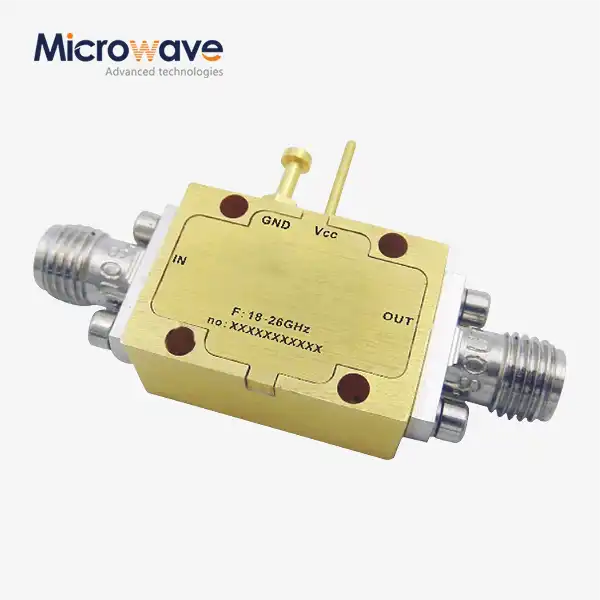 VIEW MOREVoltage Controlled Phase Shifter
VIEW MOREVoltage Controlled Phase Shifter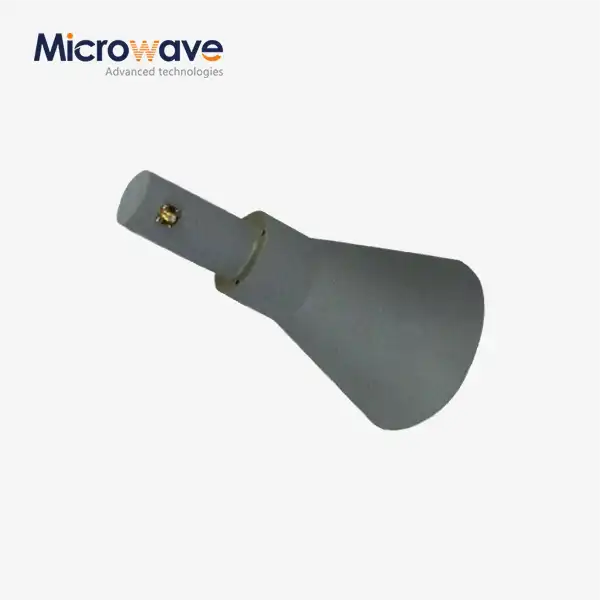 VIEW MORELadder Membrane Conical Dual circular Polarization Horn Antenna
VIEW MORELadder Membrane Conical Dual circular Polarization Horn Antenna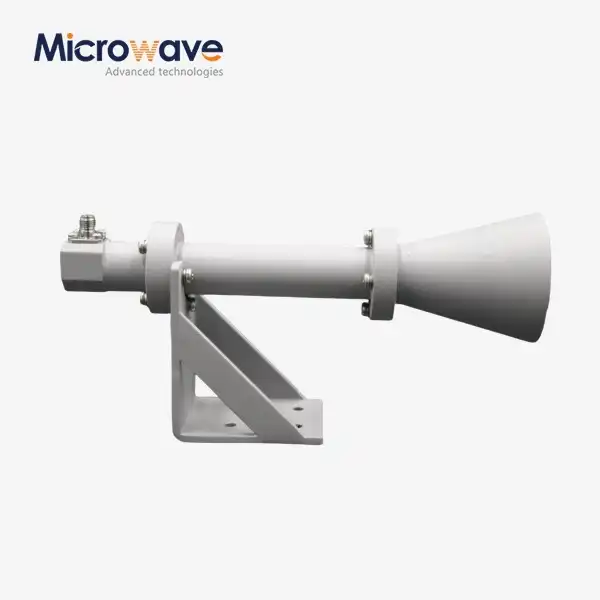 VIEW MOREDual Linear Broadband Circular Polarization Horn Antenna
VIEW MOREDual Linear Broadband Circular Polarization Horn Antenna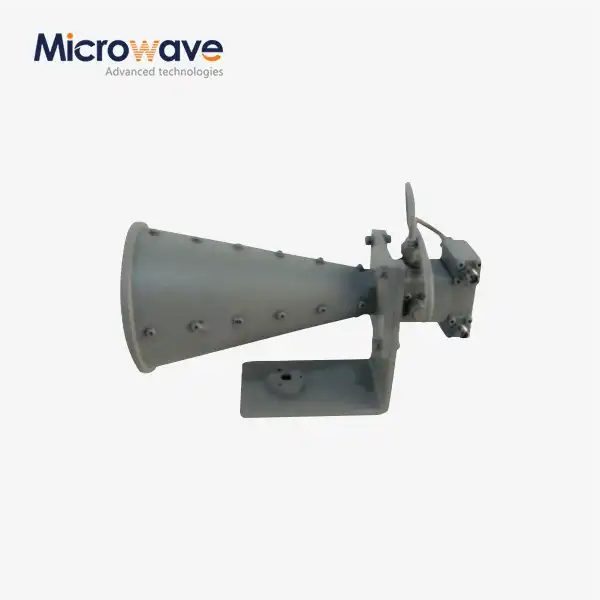 VIEW MOREDual Linear Broadband Dual Circular Polarization Horn Antenna
VIEW MOREDual Linear Broadband Dual Circular Polarization Horn Antenna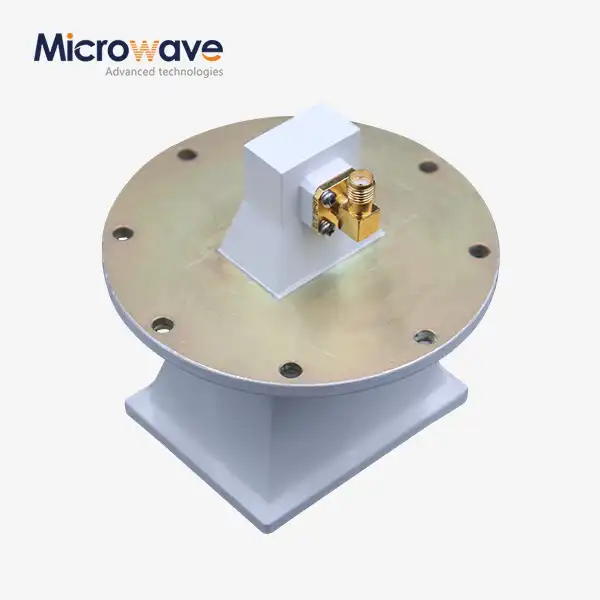 VIEW MOREPyramidal Linear Polarization Horn Antenna
VIEW MOREPyramidal Linear Polarization Horn Antenna




